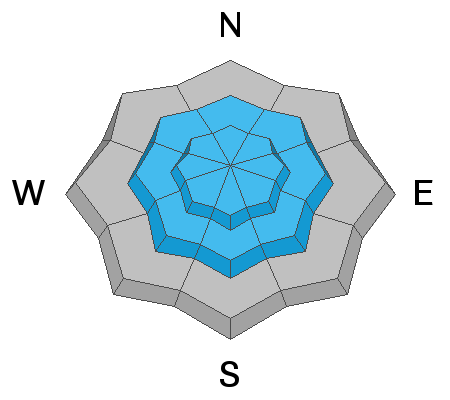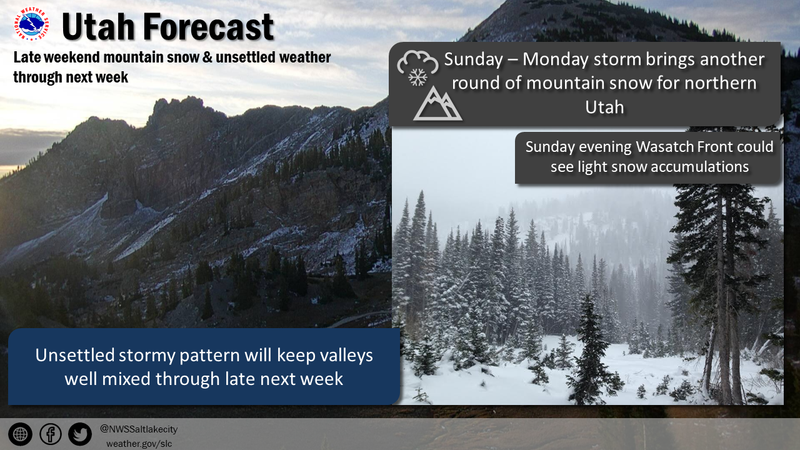This morning temperatures have mostly warmed into the mid 20s F after dropping into the upper teens last night. At many lower elevation locations, temperatures are in the teens F. Winds eased since yesterday and this morning are blowing about 10 mph gusting to 15 mph from the SW. At 11,000 feet winds are gusting to 30 mph.
Today, a weak trough of low pressure will graze by northern Utah. Winds should increase some and blow 10-20 mph from the SW before shifting to the WNW. Skies should have high level clouds this morning with lower level clouds arriving this afternoon with a small chance for a few snowflakes to fall. Sunday afternoon should have accumulating snowfall that brings 5-11 inches by Monday.
Sunshine yesterday warmed south facing slopes which should have a thin ice crust on them this morning.
Our
Week In Review which summarizes the weather and avalanche activity for this past week has been published.
Winds yesterday weren't as strong as they were during the storm, but they continued transporting some snow.
Yesterday a few ski areas were able to trigger some slabs of wind drifted snow.
Most of these wind slab avalanches happened during and just after the New Year's storm. They failed in low density powder just under the dense New Year's snow. The widest breaking slides occurred on more southerly facing slopes near an ice crust that formed just before the storm. See Drew's
observation from yesterday.
One slide was triggered yesterday on a southwest facing slope in
upper Little Cottonwood Canyon that failed near this crust. This slide was about 18 inches deep and 60 feet wide.
Yesterday afternoon Trent and I checked out a
massive natural avalanche in Tanner's Gulch in Little Cottonwood Canyon that happened very early in the morning of Jan 2 on a heavily wind loaded slope. While we don't expect similar avalanches today, it is a good reminder that lots of wind and lots of heavy snow is always a good recipe for avalanches.
Check out all of our observations and avalanches
HERE.












